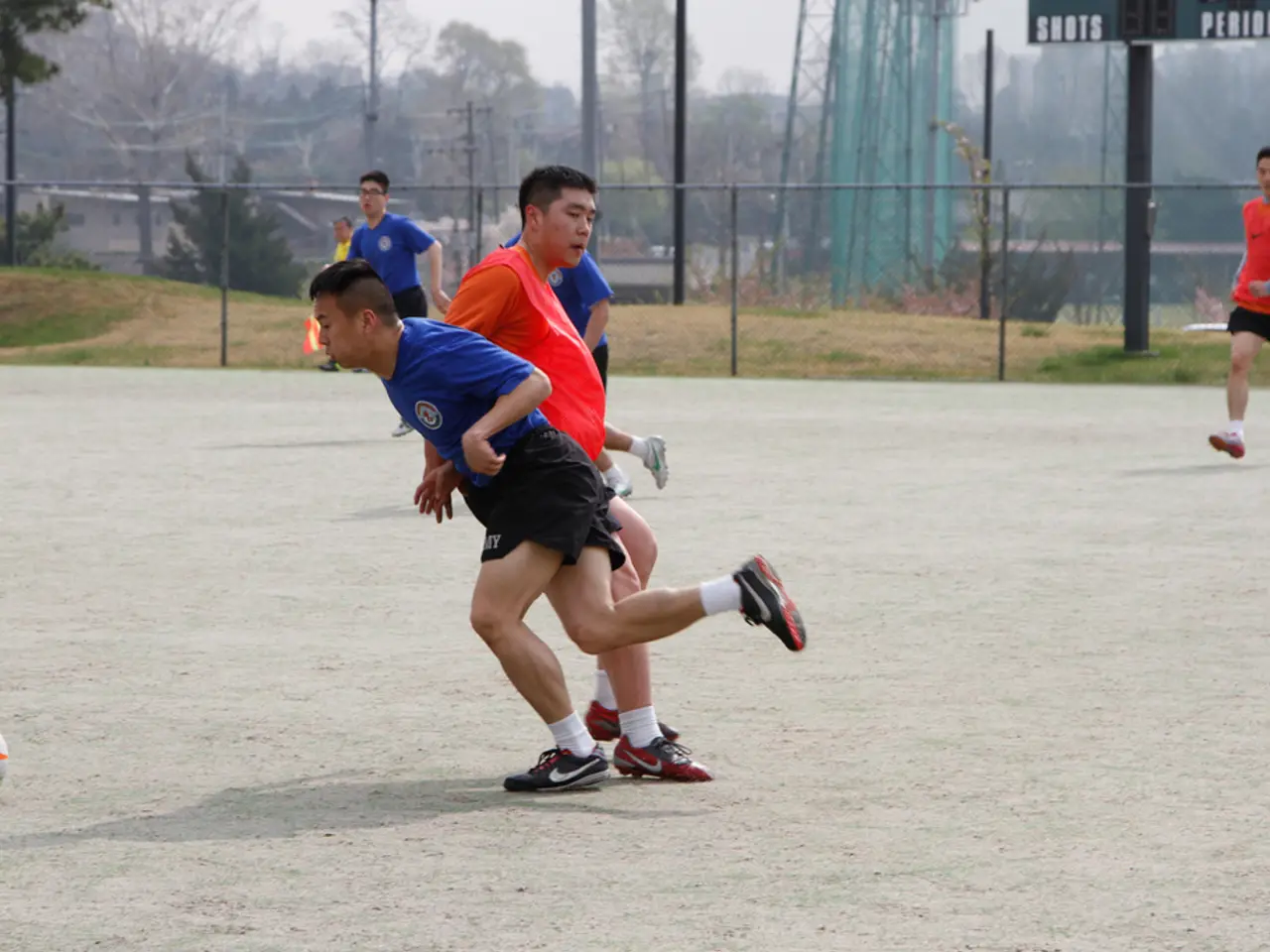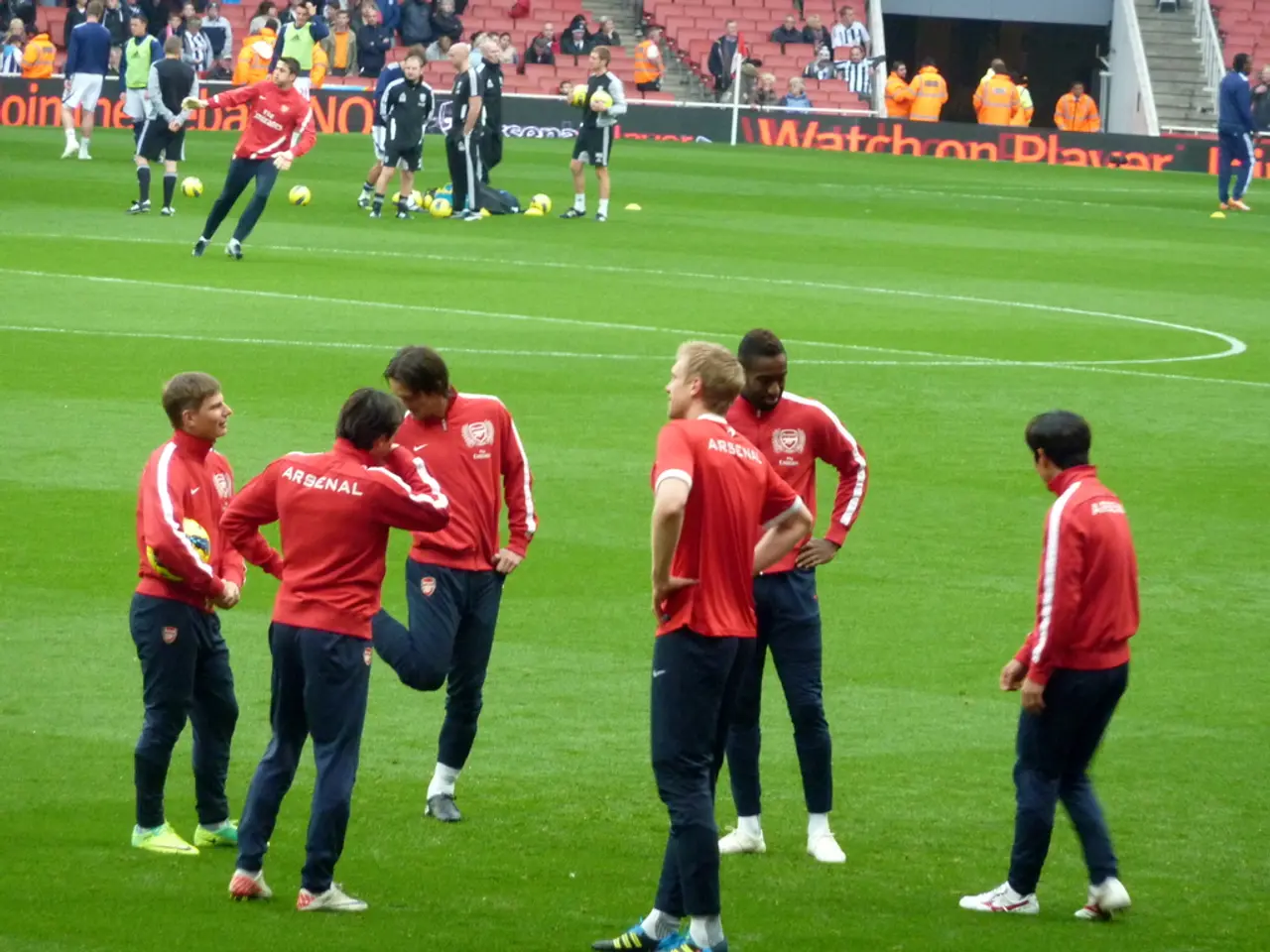Functioning of American Football Explained
In the exciting world of American football, the National Football League (NFL) follows a unique system known as the down-and-distance system. This system, which governs how the offensive team advances the ball, is a crucial aspect of the game.
The official NFL football, handcrafted by Wilson Sporting Goods Co., is an oblong sphere measuring between 11 to 11.5 inches (27.9 - 29.2 cm) long. It weighs between 14 and 15 ounces (397 - 425 grams), and its construction includes a three-ply, synthetic lining, cowhide covering, and a polyurethane bladder.
The NFL football field is a rectangular area, measuring 120 yards (110 m) long and 53 yards, 1 foot (49 m) wide. At each end of the field, there is an end zone, a 10-yard-wide (9-meter-wide) area inside the end line. The goal line, an 8-inch-wide (20-cm-wide) line, runs across the front of each end zone. The field is marked with yard lines, hash marks, and has pylons flanking the end of the end line and the goal line.
The offensive team has four downs (attempts) to advance the ball at least 10 yards from the starting point of that set of downs. If they succeed, they earn a new set of four downs, starting again at "1st and 10." However, if they fail to gain the required 10 yards after four attempts, possession of the ball is turned over to the opposing team at the spot where the final down ended.
The "distance" in down-and-distance refers to how many yards the offense needs to gain to get a first down. For example, "1st and 10" means it is the first down, and the offense must gain 10 yards for a new set of downs. If it is "3rd and 5," it means it is the third down, and the offense needs to gain 5 more yards for a first down.
On the 4th down, teams face a strategic decision: they can attempt to gain the remaining yards needed for a first down and continue the drive, punt (kick the ball to the other team) to improve field position, or attempt a field goal if close enough to score points. Failing to convert the 4th down results in the opposing team taking possession at the current spot.
If the offense is close to the opponent’s end zone, the distance required for a first down can be fewer than 10 yards (e.g., "1st and goal").
The down-and-distance system incentivizes continuous advancement of the ball and strategic decision-making based on field position, game clock, and score.
Each NFL game consists of three teams: the two competing teams and the officiating crew, which comprises six men, each with distinct responsibilities. The referee is the head official on the field, responsible for giving signals and serving as the final authority on rule interpretation. The umpire rules on players' equipment and conduct, while the head linesman is responsible for calling infractions of player movement when lined up on the line of scrimmage. The line judge keeps time during the game, the field judge makes calls regarding the wide receivers and backs on his side of the field, the side judge makes calls regarding the wide receivers and backs on his side of the field, and the back judge makes calls regarding the tight end and the player the tight end might be blocking, and is also responsible for keeping the time for the 25-second play clock, time-outs, and intermissions.
[1] NFL.com - The Down-and-Distance System [3] ESPN - NFL Rules Explained
The unique down-and-distance system in American football, primarily associated with the NFL, sets the offensive team's objective to advance the ball a minimum of 10 yards in four attempts. This system applies to various scenarios, such as "1st and 10" or "3rd and 5," where the former represents the first down and the offense requires 10 yards to earn another set of downs, and the latter indicates the third down, and the offense needs 5 more yards for a first down.
Furthermore, during crucial moments close to the opponent’s end zone, the distance for a first down can be fewer than 10 yards, as in "1st and goal." The down-and-distance system, along with the strategic decision-making based on field position, game clock, and score, contributes to the excitement and competitiveness of each NFL game.





